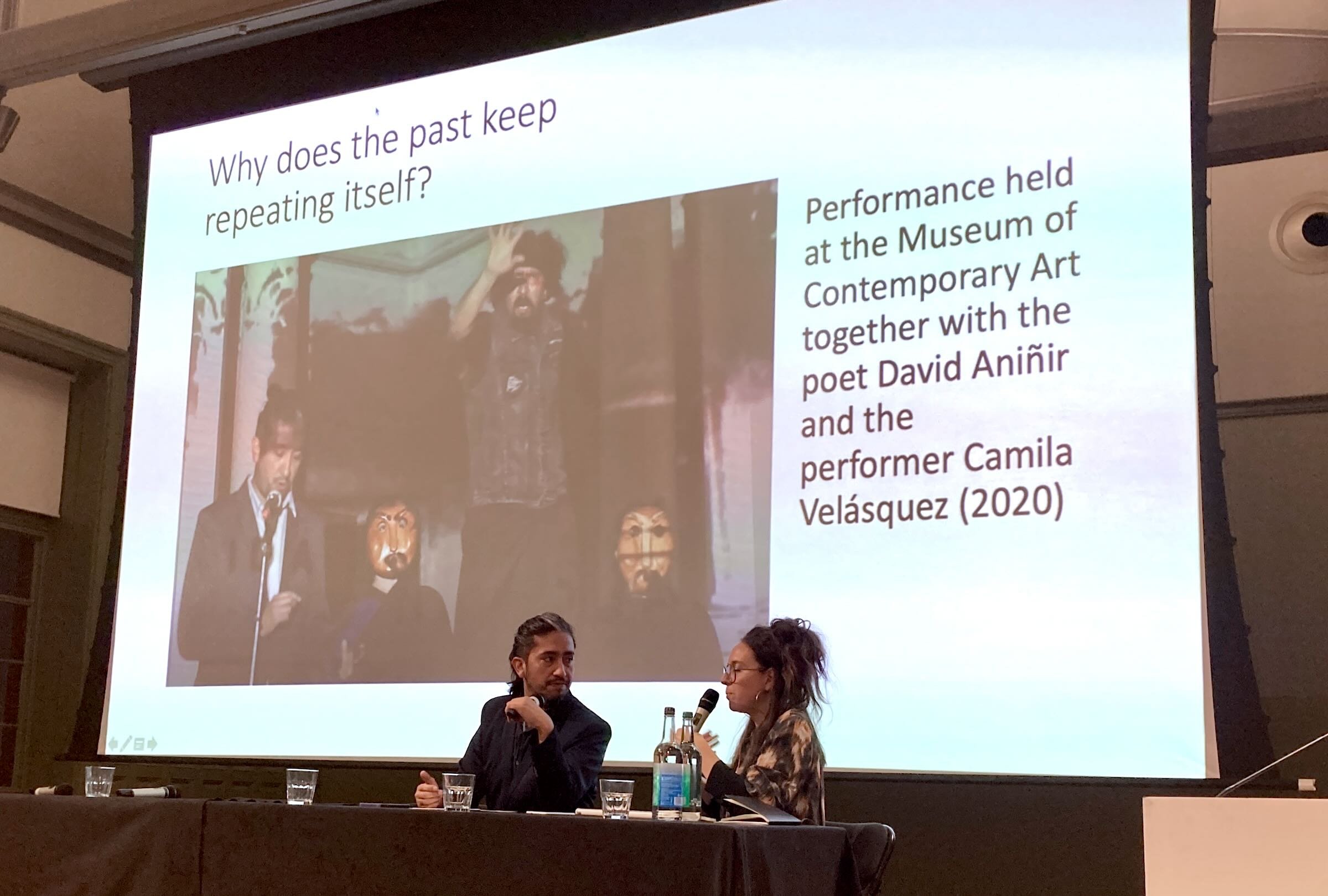Not Set in Stone: Public Art in Urban Space
21 September 2022
Whitworth Gallery, Manchester
What’s the future of urban monuments? How can art transform the connections between memory, race and colonialism that haunt urban spaces?
Inspired by Grenfell activists’ connections with the Movement for Black Lives and the way the white wrapping of the tower has become a canvas for visual campaigning, ‘Not Set in Stone’ was a public event exploring the reimagination of urban monuments in times of social and political change.
Co-organised with Olivia Casgrande, Meghan Tinsley and Gary Younge, we hosted a showcase and roundtable with three outstanding international artists-activists whose work engages with the afterlives of monuments, silenced histories and the decolonisation of urban space: Jeannette Ehlers, Roberto Cayuqueo Martínez and Quinsy Gario.
In recent years, movements such as Black Lives Matter and Rhodes Must Fall have re-occupied urban spaces in which injustices and inequalities are built into the very fabric of the city. Their actions have often used art and activism to foreground suppressed narratives or address historical legacies. Through a focus on art practice, we asked how historical memorializations to slavery or colonialism could, through forms of struggle and action, also become sites for decolonial remembering and imagining alternative futures.
Jeannette Ehlers is a Copenhagen-based artist of Danish and Trinidadian descent whose practice moves across photography, video, installation, sculpture and performance. Her work often brings about decolonial hauntings and disruptions and she insists on the possibility for empowerment and healing in her art, honouring legacies of resistance in the African diaspora. in 2022, Ehlers was shortlisted to create a national monument to The Windrush Generation at Waterloo Station.
Roberto Cayuqueo Martínez is a Mapuche performance artist and theatre director from Santiago de Chile. His practice engages with political imagination, collective memory through site-specific theatre and performance. Recent work has used collaborative critical cartography and storytelling techniques to foreground invisibilized histories of indigenous Mapuche in urban Chile.
Quinsy Gario is a visual and performance artist and activist from the Caribbean islands that have Dutch colonization in common. He focuses on decolonial remembering and the actions that that remembering can engender. One of his most well-known works, Zwarte Piet Is Racisme (2011–2012), critiqued public knowledge surrounding the racist Dutch figure and practice of Zwarte Piet (Black Pete).
This event was held as part of the workshop Afterlives of Monuments and Alternative Urban Futures held at the School of Social Sciences, University of Manchester in September 2022.
Watch a recording of the event on YouTube.

